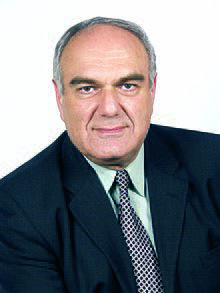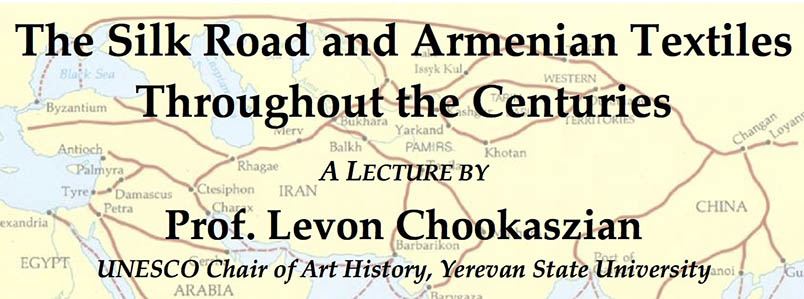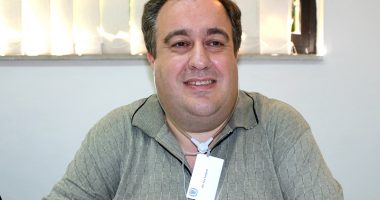

The lecture is part of the Armenian Studies Program Spring 2017 Lecture Series and is supported by the Leon S. Peters Foundation.
The archaeological evidence of the involvement of Armenia in the developing system of pan-Asian exchange of goods can be traced to the 3rd millennium B.C. Goods destined for the Near East from Central and South-Eastern Asia passed through Armenia to be taken to western Asia Minor, the Balkans, and the North Caucasian passes and beyond. These routes served as the beginning of the Great Silk Road.
The “opening” of the road in the 130s BC after the successful mission of Chan Tsiang—the ambassador of the Chinese Emperor to the palace of Parthian monarchs—coincided with the period of political and economic rise of the Armenian Kingdom under Tigran the Great (95-55 BC).
One of the principal branches of the Silk Road stretches along the Ararat valley, through the current territory of the Republic of Armenia. Five historic capitals of Armenia, including Yerevan, are on this road. Silks and textiles were not only exported to Armenia but also produced inside of country.
The renowned Venetian Marco Polo was astounded by the beauty of Armenian carpets. We find that beauty on the canvases of Italian Renaissance painters and in the descriptions of the palaces of Khalid Al-Rashid. Images of these silks and textiles are preserved inside of the Armenian medieval manuscripts—but are as of now largely unstudied. Dr. Chookaszian will trace this history through the study of Armenian medieval manuscripts.
Dr. Levon Chookaszian is the UNESCO Professor of Armenian Art History at Yerevan State University and one of the leading authorities in the world on Armenian art. He is the author of two monographs: The Art of the 13th century Armenian Painter Grigor Tsaghkogh (1986), and the other on Arshag Fetvadjian Masters and Treasures of Armenian Art (2011). Chookaszian has taught at Yerevan State University since 1978 and is one of the founders of the department of art history. In 1996 he established the UNESCO Chair of Armenian Art History.
The lecture is free and open to the public. Free parking is available, using parking code 273703 (use the code in kiosks in the parking area to receive the permit) at Fresno State Lots P5 and P6, near the University Business Center, Fresno State.
For more information about the lecture please contact the Armenian Studies Program at 278-2669, or visit our website at www.fresnostate.edu/armenianstudies.











1 comment
I’m currently doing research on the influence of weaving along the 40 degrees of latitude from Moghan in Azerbaijan to Erzincan in Eastern Anatolia. Between those two points is Armenia and some of the weavings that are along the latitude were either woven in Armenia or Eastern Anatolia. I’m looking for the routes during the 17th and 18th centuries between Moghan (Azerbaijan), Armenia and Eastern Anatolia. If you can inform me as to the most used road ways during that period that would be insightful.
Best, Brian Morehouse